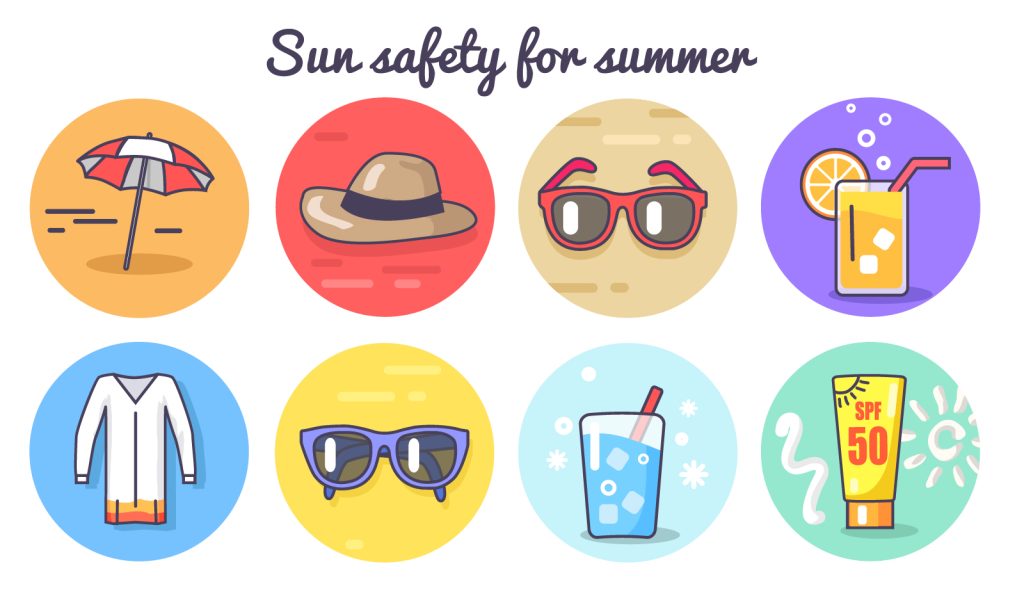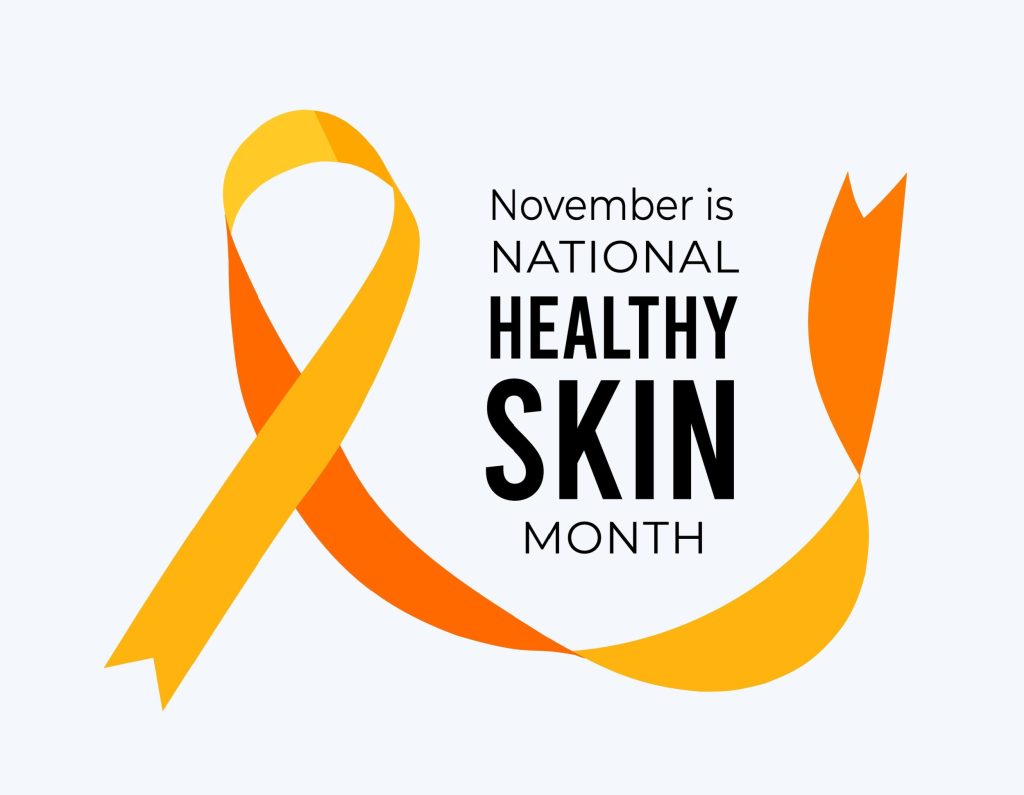
The big, red sunburn – we all know it. It’s the telltale sign that you’ve been out in the sun unprotected for too long. Accompanied by sensitivity, peeling skin, and itchiness, your skin will give off clues that it’s been burned and needs to heal. But did you know that there are several other types of sun damage that don’t include sunburn? In fact, simply walking to the mailbox or riding in the car can affect your skin. It doesn’t even take a super-hot or sunny day to bring on sun damage – sometimes sun damage sneaks up on you in ways you wouldn’t expect.
The experts at Florida Dermatology and Skin Cancer Centers want you to spot the signs of sun damage and stay safe and strong from head to toe all year long. Keep reading for more information on common types of sun damage and how to protect your skin before and after spotting it.
What Does Sun Damage Look Like?
You might not always see it right away, but your skin remembers every minute you spend in the sun. Over time, this adds up and causes changes. Here are the most common ways your skin can change after being in the sun too much, even if you didn’t get a sunburn.
1. Wrinkles From Too Much Sun
The sun breaks down the parts of your skin that keep it stretchy and firm – collagen and elastin. If you have spent a significant amount of time in the sun, you might start to see tiny lines or folds on your face, especially near your eyes or mouth, otherwise known as wrinkles. Many dermatologists call this process photoaging. Without collagen and elastin in proper functioning condition, your skin will start to sag and wrinkle. Wrinkles typically affect your face, neck, and hands because they are in the sun the most.
2. Tiny Red Lines
If you notice little red or purple lines that look like squiggles or spider webs on your nose and cheeks, you are likely experiencing enlarged blood vessels. These show up when UV radiation weakens small blood vessels under your skin and causes them to expand. The skin also gets thinner from the sun damage and the red or purple lines are more pronounced. This happens typically around your nose, cheeks, chin and sometimes the chest. These lines are often permanent but can be treated by a dermatological professional to help them become less visible.
3. Sunspots and Freckles
Brown spots and freckles are your skin’s way of telling you that it’s been overexposed to the sun. Some people call them “age spots,” but these spots are actually caused when your skin produces too much pigment, or melanin, to protect itself from UV rays. Brown spots and freckles usually show up on the forehead, nose, hands, arms, and shoulders. It’s important to keep an eye on any new or changing spots, to be sure they are not skin cancer. Giving yourself regular self-skin exams and seeing your dermatologist for an annual skin exam is key to keeping your skin healthy with early detection against skin cancer.
4. Uneven Skin Tone
If your skin has dark or light patches or looks blotchy, you may have a type of sun damage called hyperpigmentation. When your skin is burned or damaged by the sun, it can become inflamed and irritated. While not something typically of concern medically, the inflamed skin over time becomes hyperpigmented. Sometimes, these spots lead people to seek treatments that include using products with ingredients that also inflame and irritate the skin, thus making them even more susceptible to an uneven skin tone. A good sunscreen routine and gentle products recommended by a dermatologist can help soften the look of hyperpigmentation.
5. Large Pores and Blackheads
Spending a lot of time in the sun can make your pores look bigger. That’s because the elasticity in your skin reduces with sun damage. When dirt and oil collect in these stretched-out pores, they can look black. These differ from acne-associated blackheads and are actually categorized as Favre-Racouchot syndrome. This condition is more common in older adults, especially men, with a lot of sun exposure. You’ll notice these blackheads mostly in the temples and cheeks. Gentle exfoliating products, retinoids, and a specialized skin care routine can help keep your pores clearer.
6. A Red, Spotty Neck That Won’t Go Away
Have you ever noticed someone with a red, patchy neck that stays like that all the time? Maybe it’s you. This phenomenon is called poikiloderma. It comes from too much sun over the years. It’s not the same as getting a one-time sunburn. In this case, the skin becomes red, thin, and sometimes itchy or dry, permanently. This is very common in people who have professions that include spending a lot of time outdoors and in direct sunlight.
7. Melasma
Melasma is a skin condition that causes large, flat patches of dark skin, usually brown or grayish in color. These patches often appear on areas of your face that get the most sun, like your cheeks, forehead, nose, and upper lip. The edges of the patches can be smooth or uneven, and they usually show up on both sides of your face in the same spots. It’s more common in women than men, especially during times when their hormone levels change. For example, melasma often appears during pregnancy, which is why it’s sometimes called the “mask of pregnancy.” Melasma is a mix of sunlight + hormones. When your skin is exposed to sunlight, it makes more pigment (melanin). If your hormones are changing at the same time, your skin may start to produce extra pigment in certain areas, causing dark patches to form. Even just a few minutes of sunlight can make melasma worse, especially if you’re already prone to it.
How to Protect Your Skin & Reverse Sun Damage
The best way to fight sun damage is to help prevent it in the first place. Here’s how to keep your skin healthy no matter the season.
Morning Routine
- Use sunscreen every day, even in winter or when it’s cloudy.
- Choose a sunscreen that says “broad spectrum” and has at least SPF 30 (use SPF 50 if you are going to be outdoors for an extended period of time, and re-apply at least every two hours when outside, or immediately after swimming or sweating).
- Wear sun-safe clothing like hats, long sleeves, and sunglasses.
- Add a vitamin C serum before sunscreen to assist with stimulating the production of collagen.
- Drink lots of water (throughout the entire day!) to keep yourself and your skin hydrated.
Night Routine
- Use retinol or vitamin A creams to help your skin repair overnight. These products can improve texture and fade spots over time.
- Don’t forget a moisturizer to prevent dryness.
- Use an eye cream to help hydrate, protect, and target issues like dark circles or crow’s feet without irritating the skin.
Professional Treatments
- Laser and light therapies to reduce spots and broken vessels
- Chemical peels to improve uneven skin tone
- Prescription creams for melasma and hyperpigmentation
- Fillers and skin boosters for deeper wrinkles
Sun damage is more than just sunburn. It can cause wrinkles, spots, patchy skin, and other changes you might not expect. But the good news? You can take action right now to protect your skin!
At FLDSCC, we’ll help you find the best treatment plan for your skin type and goals.
To recap, here’s our quick sun-safe checklist:
✅ Use sunscreen every single day
✅ Wear protective clothing and seek shade when possible
✅ Use products that help your skin heal at night
✅ Visit a dermatologist if you notice changes in your skin
By taking the time to learn what to look for and how to protect your skin all year long, your skin will return the favor by staying safe and strong.
If you’d like help choosing the right sunscreen, talking through sun damage treatment options, or want to discuss a spot you’re concerned about, come see us at FLDSCC. Our physicians are experts in diagnosing and treating skin cancers and conditions effectively and efficiently. We’re here to help your skin stay healthy and beautiful.
About Us
FLDSCC’s team of providers are experts in diagnosing and treating skin cancers; skin conditions and diseases such as eczema, rosacea, dry skin, rashes, and warts; and chronic skin diseases and infections, while simultaneously tackling aging skin, wound care, and a multitude of other skin, hair, and nail concerns.
Several FLDSCC providers are fellowship-trained in Mohs micrographic surgery, an effective state-of-the-art treatment for most types of skin cancers. Mohs surgery involves minimal discomfort and encourages the greatest preservation of healthy tissue, which means less risk of scarring and superior cosmetic results.
FLDSCC has many convenient locations throughout the state. For more information, visit www.fldscc.com, or call (855) FLD-SKIN.


